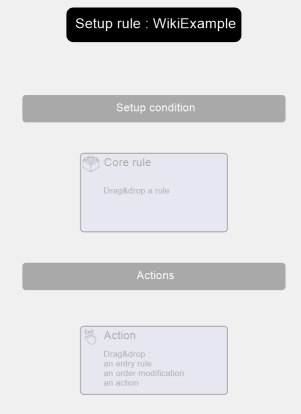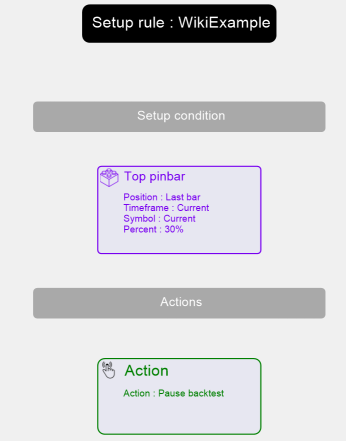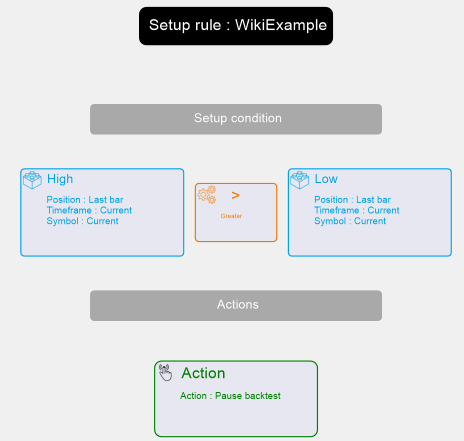Setup Rules: Difference between revisions
No edit summary |
|||
| Line 98: | Line 98: | ||
=== The Actions === | === The Actions === | ||
The Actions are simply the actions to perform when the condition is filled. You can use two kinds of Rules in the Actions : | |||
* Default Rule Action | |||
* Entry Rule | |||
<br> | <br> | ||
In order to assign a Rules to an Action, you have to drag&drop the related Rule. | |||
Revision as of 09:31, 24 August 2021
Summary
The Setup Rules are the Rules dedicated to perform actions when a certain condition is met. These Rules allow the possibility to launch an action (pause the backtest, show a message) and/or to enter the Market automatically by inserting an Exit Rule.
The Setup Rules are divided in two parts :
- The Setup Condition : the condition defined by the User which will be checked by the Software on every new Bar printed on the Charts.
- The Actions : the action to perform when the previous condition is filled
Empty Setup Rule :

The Setup Condition
The Setup Condition is composed by at least one Conditional Core Rule. The expression has to return True or False. Thus, a Setup Condition can be filled with any type of Rule if the overall expression is a condition :
- Default Rules, composed by one or more Conditional Core Rules
- User Rules, returning a condition (ex: 2 Value Core Rules comparison will return True or False)
In order to assign a Default or User Rules to a Setup Condition, you have to drag&drop the related Rule.
Example with a Default Conditional Rule :

Example with 2 Default Value Rules, returning a condition :

Example with a User defined Conditional Rule :

The Actions
The Actions are simply the actions to perform when the condition is filled. You can use two kinds of Rules in the Actions :
- Default Rule Action
- Entry Rule
In order to assign a Rules to an Action, you have to drag&drop the related Rule.